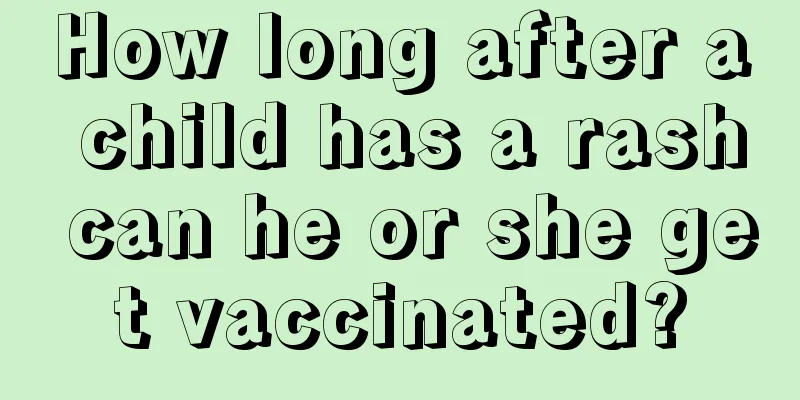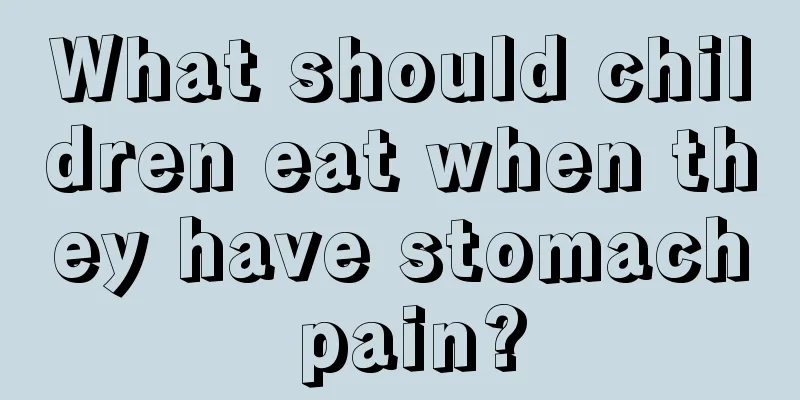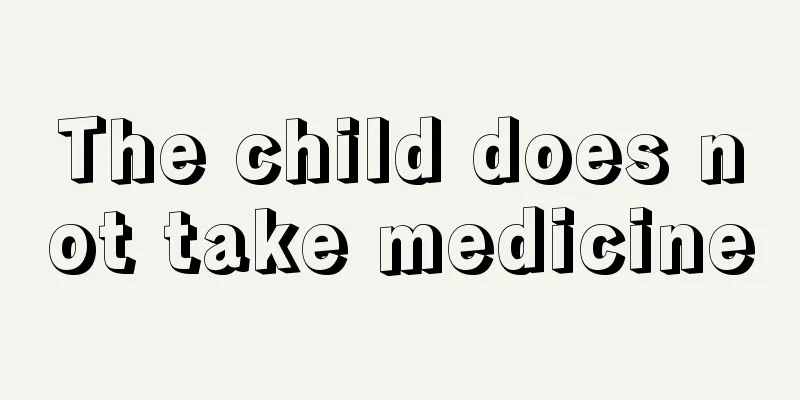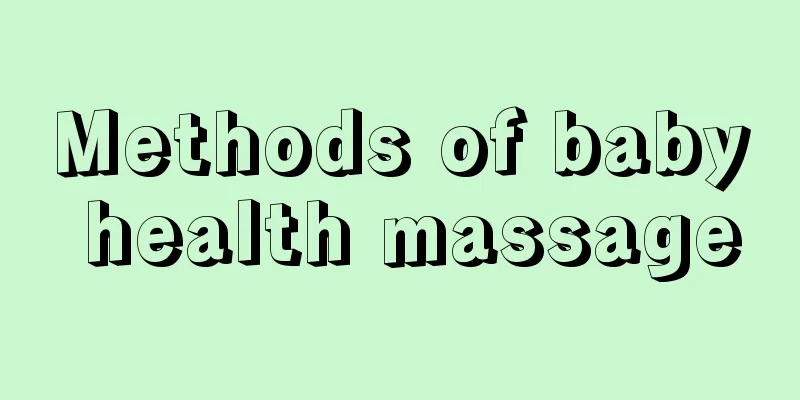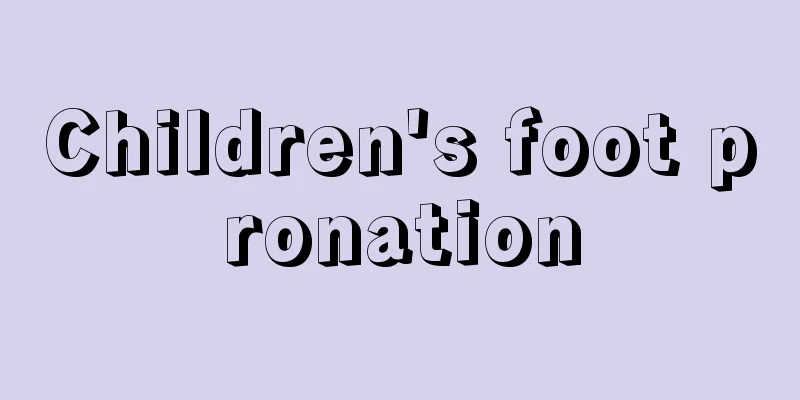What should I do if my four-year-old child has a fever of 38 degrees?
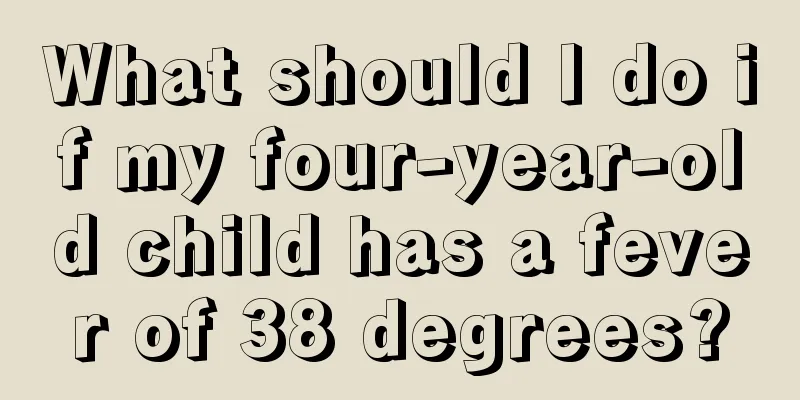
|
Children will always develop one disease or another during their growth process, among which fever is a very common phenomenon. Many children will experience this phenomenon. Whenever a child has a fever, most children will show fatigue, lack of energy, and no appetite. As parents, we will feel very distressed when we see our children have a fever. So what should we do if a four-year-old child has a fever of 38 degrees? Pediatric fever refers to when a child has a fever with a temperature of around 39.1 to 41 degrees Celsius. A fever lasting more than two weeks is considered long-term fever. The normal body temperature of children is usually measured by a rectal temperature of 36.5-37.5℃ and an axillary temperature of 36-37℃. Under normal circumstances, axillary temperature is 0.2 to 0.5°C lower than oral temperature (sublingual temperature), and rectal temperature is about 0.5°C higher than axillary temperature. If the axillary temperature exceeds 37.4°C and the body temperature fluctuates by more than 1°C during the day, it can be considered as a fever. The so-called low fever refers to an axillary temperature of 37.5℃~38℃, moderate fever 38.1℃~39℃, high fever 39.1℃~40℃, and hyperpyrexia above 41℃. 1. First aid measures (1) You can apply a cold, wet towel to your forehead. It is better to put ice cubes in a waterproof plastic bag and wrap it in a dry towel to apply to your head and neck. You can also apply it to your armpits and groin for better results. (2) Dilute 75% alcohol with half the amount of water, then use a small towel to wet the alcohol and wipe the head, neck, armpits, chest, back and limbs. If the child's limbs are cold or the skin develops chicken skin after rubbing, you should use warm water slightly lower than the skin temperature to wipe the limbs until they turn red and warm again. (4) While doing physical cooling, you should also take antipyretics. If you have a history of high fever and cramps, you should also take sedatives. If your home is far from a hospital and transportation is inconvenient, it is best not to rush to the hospital regardless of anything if you have a high fever. You can first perform the above-mentioned emergency treatment at home. 2. Cooling method (1) Traditional physical cooling method Place the child in a quiet, cool, well-ventilated place. Use a cold towel or cold water bag to apply to the forehead, armpits, groin and other parts, or use an ice bag wrapped in cloth as a pillow on the head or place it on the above-mentioned parts. You can also use cold water (28-30℃) or alcohol (30-50%) to bathe the limbs, both sides of the torso and the back. If the child develops pale skin or cold skin during sponge bathing, stop immediately. Cold saline (30-32°C) enema can also be used, which is more suitable for those suspected of poisoning. It can reduce the temperature and facilitate the collection of stool samples for examination. (2) Drug cooling method For immature children, infants and weak children, antipyretics are generally not used to reduce fever; children aged 0 to 23 months can take Baifuning (antipyretic oral) drops for children, and children aged 2 to 12 years can take Baifuning (antipyretic) solution or chewable tablets for children, once every 4 to 6 hours. The advantage of this antipyretic is that it is absorbed quickly after oral administration and takes effect within 30 minutes. It does not have the irritation to the gastrointestinal tract like traditional antipyretic and analgesic drugs and reduces the impact on white blood cell and platelet function. (3) Acupuncture cooling method 3. Symptomatic treatment (1) When the fever is high, water loss increases and appetite decreases, so water and electrolytes should be replenished in time; (2) For patients who are irritable, have recurrent convulsions, or for whom general cooling measures are ineffective, chlorpromazine and promethazine may be used as appropriate. Generally speaking, when a child has a fever, parents should not give the child antipyretics at will. Physical cooling methods should be adopted in time. You can let the child drink more water. When the child has a fever, do not force the child to eat something. If the fever persists, it is best to take the child to see a doctor to take measures. |
<<: Why does my child continue to have a fever?
>>: How to deal with a child having a fever at night?
Recommend
What should I do if my child doesn’t eat well? These methods can help you
Many children do not know how to eat well, which ...
Treatment of severe anemia in children
Many people believe that anemia is a disease that...
Are gastrointestinal flu symptoms serious in children?
In fact, the so-called stomach cold in children i...
What are some weight loss exercises for teenagers?
Adolescence is the time when people pay more atte...
Reasons why babies always cry and don't sleep
There is a reason why babies cry at night. Check ...
One Minute Sex Education
Nowadays, the problem of sexual assault on childr...
Nine taboos that babies should not violate in their diet
During the growth and development stage of babies...
What to do if your child has vomiting and diarrhea
Regardless of the season, vomiting and diarrhea a...
What kind of milk powder should a 4-year-old child eat?
4-year-old children have stopped drinking breast ...
Why is my baby's chest high?
We should take care of children meticulously and ...
What are the symptoms of calcium deficiency in babies
Babies are very cute angels and the most precious...
What causes lower respiratory tract infection in children?
Children have weaker immunity and are therefore m...
Can babies sleep in soft beds?
Maybe everyone has felt that sleeping on a soft b...
What causes baby's knee joints to make noises?
Many mothers have found that their children's...
What should I do if my baby has mild pneumonia?
Pneumonia is a common disease among our babies. I...
